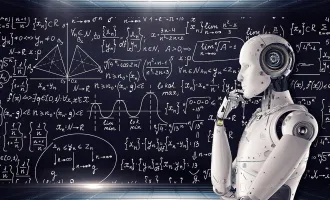Getting the Diagnosis Right on Climate Change
Climate change is a life-altering diagnosis for all of us. We’ve seen the coverage of massive storms, floods, droughts, and disappearing glaciers and sea ice. Yet most of us are missing that critical link for making it personal and profound, for opening ourselves and our families to grieve the loss of a seemingly limitless, inviolable natural world, as well as the erosion of the ideal of breathless economic growth and resource consumption that we built on that faulty assumption.
How do we slow down enough to catch our breaths and speak to the fears, apprehension and unease that an unstable Earth stirs up, feelings that keep us bouncing between dread and distraction, rather than breaking through to climate action and the phenomenal possibilities of a sustainable and healthier future? Climate change is life altering, but only we get to decide if it alters us for better or worse.
More climate science reports and disaster journalism won’t do. The thousand-page UN reports, the polar bears, and the catastrophic prophecies have come up against, and in some senses even created, a barrier to action that more information simply won’t overcome: an unacknowledged emotional knot in the pit of our stomachs that arises from all the undigested complexity of the pickle we have put ourselves in.
The energy, food, transport and other industrial systems involved in our climate changing (health care not excluded) are extraordinarily intricate and interconnected. It can feel off-putting and overwhelming to discuss them at all, like a physician who diagnoses your child’s fever as the flu, only to jump into the specifics of viral replication and the mechanisms behind seasonal influenza outbreaks. Rather, what you’d want to know is: What is this? What can we do about it? How do we feel better?
With that in mind, let’s imagine if the Earth, like one of your loved ones, walked into a hospital seeking care: What would the diagnostics point to?
For decades, climate scientists, ecologists and other researchers have been carefully collecting and analyzing the lab results of an unwell Earth: geologists sample rock layers and look at fossils like a geneticist checks our DNA, revealing information about Earth’s heritage and how it has continually changed and evolved into our current, momentary configuration of continents, species and planetary conditions; climatologists drill Arctic ice cores like taking frozen tissue biopsies from our Earth’s vital ice-cap organ, which regulates our sea levels with its cold stores of fresh water; oceanographers sample our rapidly acidifying oceans and dissolving coral reefs to measure out and analyze the levels of many of the same minerals and other chemicals that our blood tests do. This oceanic acidification is, in fact, the result of the same exact process of CO2 dissolving into and combining with water that helps set the pH level of our blood.
Judging from our Hollywood fantasies, played out not only on TV or the silver screen but in the gloomy predictions about “where the world is headed” spouted by your uncle or best friend, we seem prone to framing our Earthly conditions as a sign of some terminal cancer or virus: humans are multiplying and growing out of control through population and profiteering. Yet the crux of our carbon crisis started with the 19th-century Industrial Revolution, when the West began to feed the growth of quickly industrializing societies with coal and other fossil fuels as cheap energy sources. The effects on weather and other ecological cycles of releasing greenhouse gases from these fuels into our atmosphere were delayed many years, even centuries.
So what would any reasonably-trained health care worker suspect if given this short description of a patient: Pt. grew up on cheap, industrially-processed energy sources; later in life began to have some mild symptoms throughout the body, especially the periphery, but ignored these; now presents with rapidly-worsening symptoms and a tell-tale pattern of altered chemistry on their labs (acidosis, spiking levels of a carbon-rich molecule)?
Diabetes.
Our Patient Earth has industrial diabetes.
Beyond the clinical presentation and Earth science diagnostics, the parallels between human diabetes and Earth’s industrial diabetes are remarkable. The processes are not only analogous but also intersect in very concrete ways. Just take a trip on the interstate highway system, traveling alongside massive 18-wheelers hauling processed foods and plastic merchandise, and pull over at an ubiquitous gas station-and-fast food roadside stops, to see that the roots of our global diabetes epidemic and our carbon crisis are intimately intertwined.
Whole Earth Health Care
For reasons both concrete or symbolic, climate change is the defining, unifying health challenge and catalyst of our century. And yet why is it so little spoken about, even at the most forward-looking and innovative medical centers like our beloved UCSF? The UCSF motto is “advancing health worldwide,” but our common dialogue and efforts largely ignore both the distressing and exhilarating sides of this Janus-faced, once-in-a-lifetime health risk/opportunity: we talk little about the potential erosion of last century’s important health milestones if catastrophic climate change occurs; we talk even less about the monumental possibility to design societies based on renewable energy and environmental stewardship principles, which could in turn create wildly healthy cities and towns, places where the healthiest lifestyles and opportunities for total wellness are the norm rather than exceptional achievements by the well-to-do and highly motivated.
The simplest and clearest reason this in not yet a universal part of the UCSF culture is that we are all very busy and focused on our work. Many of us easily identify as health scientists and advocates, but it seems out of our purview to identify with and stand shoulder-to-shoulder with the Earth scientists presenting their massive reports at UN climate conferences. Their diligent work diagnosing the conditions of climate change, however, is strikingly similar to our own work with the human body, only on an ecosystem and planetary scale.
During the last wave of environmental awareness around 1970, the year the first Earth Day was celebrated, this notion – that the planet might act in ways similar to a single, self-regulating organism – was commonly referred to as the Gaia hypothesis. Many voices in the scientific community derided it, with one particularly famous biologist criticizing it as “a metaphor, not a mechanism.” Yet metaphors are the work horses for consolidating and applying the technical knowledge of nature’s mechanisms; busy health science students learn early on to imagine the function of immune cells, or antibiotics, or DNA replication proteins, like a lock-and-key process, a very helpful metaphor that we can even pass onto patients when advocating for vaccination to keep herd immunity (another metaphor), or forgoing useless antibiotics for viral syndromes. Therefore, I am unapologetically offering the metaphor of a Diabetic Gaia to guide some of our thinking and actions around climate change. We who understand diabetes, both its straightforward treatment and its horrid outcomes when left uncontrolled, can meet our Earth, energy and environmental science allies on this mutually instructive term.
Climate change responses and clean energy advocacy need a massive mobilization of health professionals and their allies, especially those who know how to take time to communicate and empathize with life-altering diagnoses. Anyone who has worked with the critically ill can relate to the experience of a challenging patient situation where enormous efforts by staff, deep confusion and upset of family members, and an inefficient use of scarce clinical resources could have been prevented if a family meeting had just been called sooner. In medicine, these family meetings are often where the so-called “difficult conversations” happen, where we break the “bad news” and make the “hard decisions.”
But when we flip the storyline from the doom-and-gloom of cancerous civilizations and viral humanity to the more true to life case of an industrially Diabetic Gaia, we get a more inspiring and clearcut story, which nonetheless stirs up immense feelings that need our attention. Imagine if we ran around saving a patient from heart attacks and strokes, amputating infected limbs, and trying to prevent progressive blindness and kidney failure without treating the underlying diabetes that we know contributes hugely to all these avoidable outcomes? It would be a travesty, yet that is how much of our single-issue environmental advocacy (save the polar bear! save the rain forest! save the newt!) plays out when we lack the right metaphors to tie these issues together into a true ecological and industrial tapestry.
So, yes, we need to lower the carbon our industries are pumping into our atmosphere, sure as a diabetic needs to lower blood glucose levels. We need to switch from fossil fuels to clean and renewable sources of energy, sure as a diabetic or anyone else looking to lead a healthy life should feed on greens rather than refined sugars. But most of all, we need to let go of, and empathically respond to, the death of an exhausted, isolating 20th-century storyline that humans and our health (both mental and physical) are somehow separate from nature or the health of the awe-inspiring web of life in the oceans, land and air. We need to transition to an exciting age of whole earth health care, where UCSF leads the UC system and the globe in “advancing health worldwide” by contributing to the health of Earth and its ecosystems in all we do.
Get involved in the conversation during Calling a Family Meeting for Patient Earth on Monday, November 23rd .


